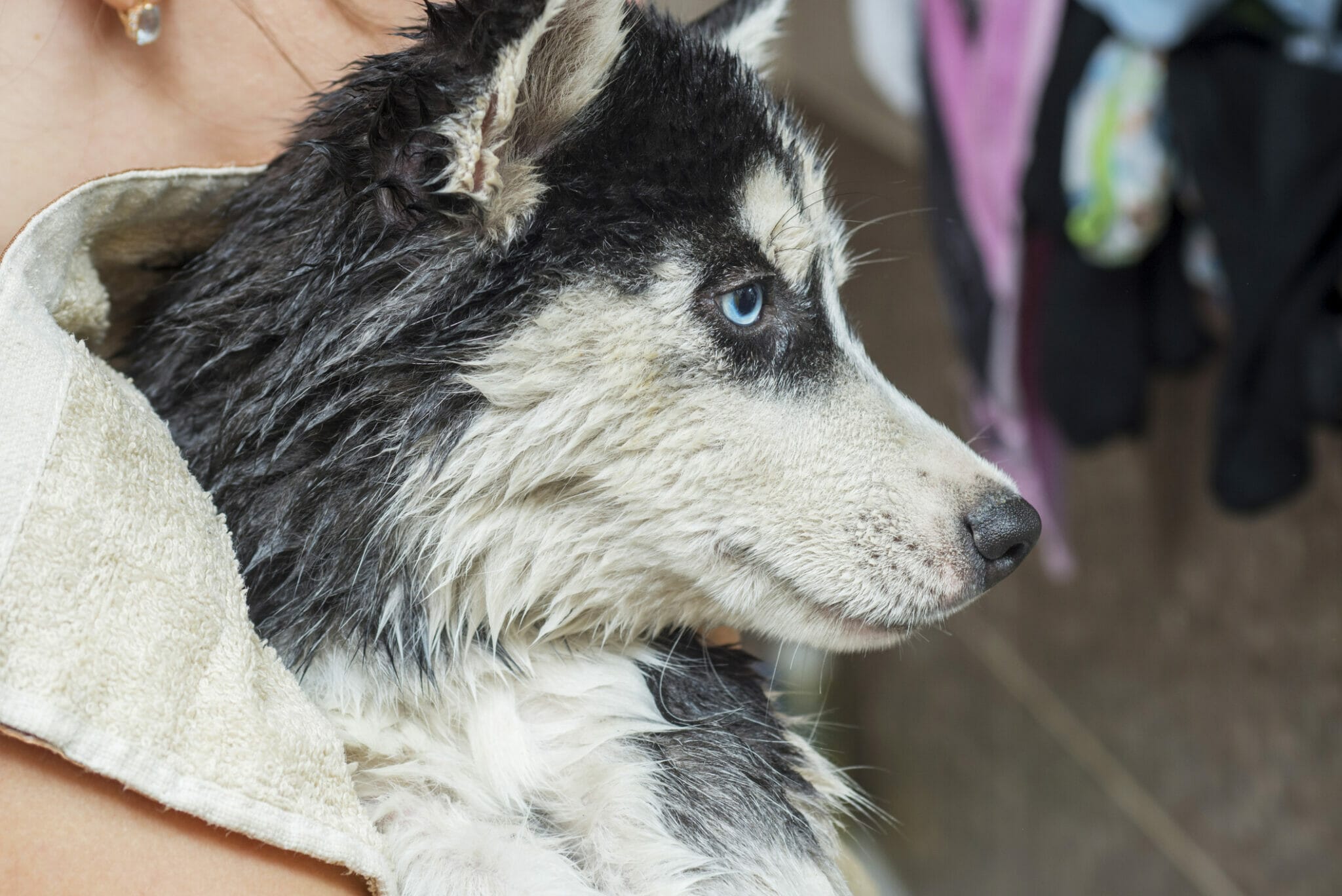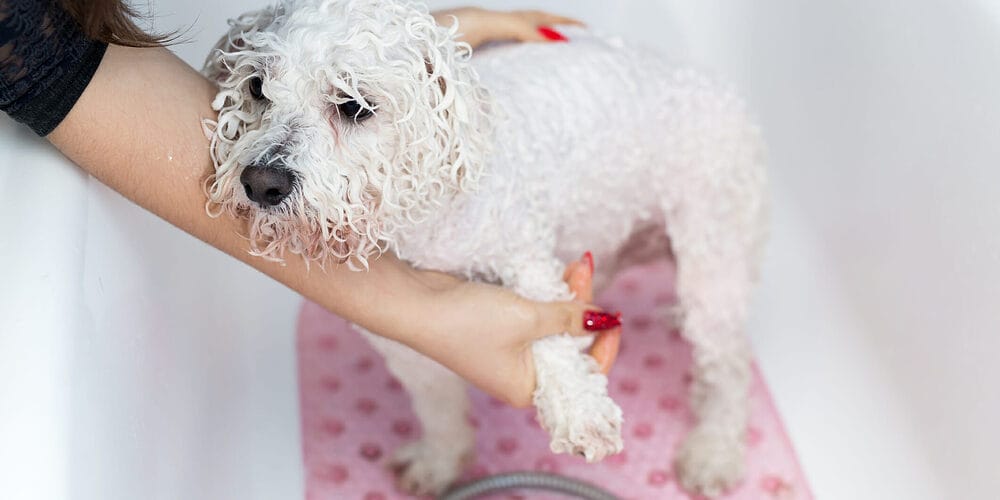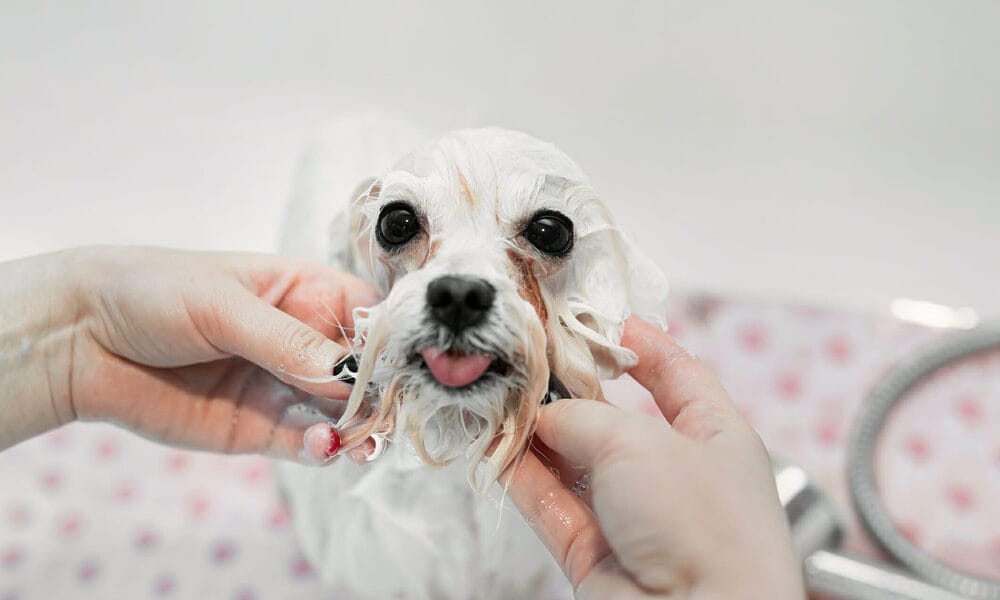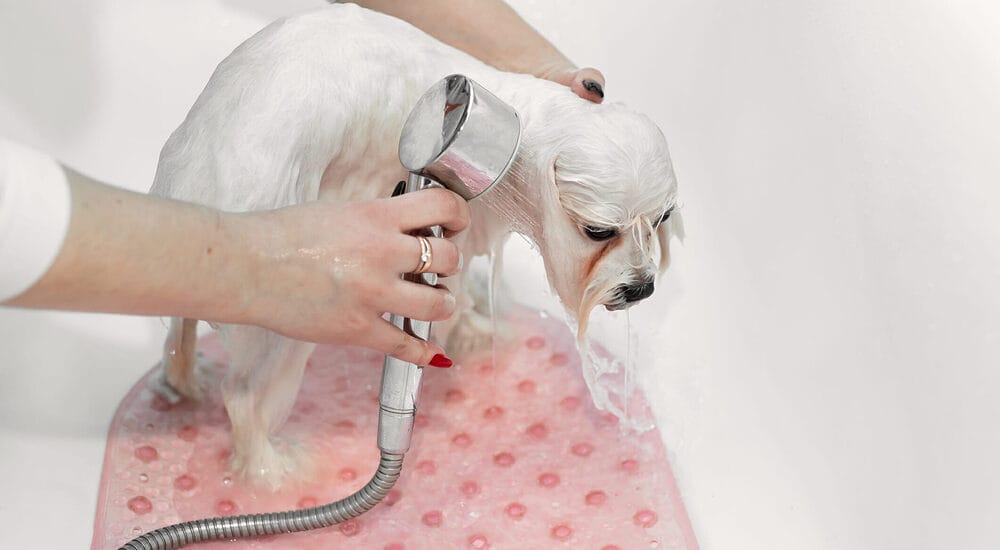
Lo and behold, your dog has turned a dingy white over the winter! While you could take them to the groomer to have their fur whitened, there are actually a few ways that you can do it at home using natural ingredients.
This guide will teach you how to whiten your dog’s fur using various methods, so keep reading if you want your furry friend to be as bright as the sun this summer!
Table of contents
4 Methods To Whiten Your Dog’s Fur Naturally
So, your dog’s fur has turned a bit yellow or brown over the winter months. Here are four ways to help get their coat back to its original color using natural ingredients:
Method 1 - Lemon Juice

One way to whiten your dog’s fur is by using lemon juice. Simply mix together equal parts lemon juice and water, and then use a cotton ball to apply the mixture to your dog’s fur. Rub it in well, and rinse off with warm water after a few minutes. Repeat this process until your dog’s fur is the desired shade of white.
Lemon juice is a natural bleaching agent, so it will help to lighten your dog’s fur. However, it is also acidic, so be sure to dilute it with water before applying it to your dog’s fur. You should also avoid getting any lemon juice in your dog’s eyes, nose, or mouth.
Method 2 - Baking Soda

Baking soda is another effective way to whiten your dog’s fur. Simply mix together 1 part baking soda and 2 parts water, and then use a cloth or sponge to apply the mixture to your dog’s fur. Don’t forget to rinse off with warm water afterward. Repeat this process until you’ve achieved the desired shade of white.
Baking soda is also a natural cleansing agent that will help to remove any dirt or grime that may be discoloring your dog’s fur. It is also mildly abrasive, so it will help to loosen any stubborn stains. Again, be sure to avoid getting any of the mixture in your dog’s eyes, nose, or mouth.
Method 3 - White Vinegar

Vinegar is another natural ingredient that can be used to whiten your dog’s fur. Simply mix together 1 part distilled vinegar and 2 parts water, and then use a cloth or sponge to apply the mixture to your dog’s fur. Rinse off with warm water after a few minutes. Repeat this process until you’ve achieved the desired shade of white.
Vinegar is an acidic substance that can help to remove any build-up on your dog’s fur that may be causing it to appear discolored. It is also a natural disinfectant, so it will help to keep your dog’s fur clean and free of any bacteria or fungi that could cause problems. As with the other methods, be sure to avoid getting vinegar in your dog’s eyes, nose, or mouth.
Method 4 - Hydrogen Peroxide

Hydrogen peroxide is another natural bleaching agent that can be used to whiten your dog’s fur. Simply mix together 1 part hydrogen peroxide and 2 parts water, and then use a cotton ball to apply the mixture to your dog’s fur. Rub it in well, and rinse off with warm water after a few minutes. Repeat this process until you’ve achieved the desired shade of white.
As a strong oxidizing agent, Hydrogen peroxide can help to remove any build-up on your dog’s fur that may be causing it to appear discolored. The oxygen in hydrogen peroxide also helps with removing odors, so it can be used as a natural deodorizing agent. As with the other methods, be sure to avoid getting hydrogen peroxide in your dog’s eyes, nose, or mouth.
Additional tips for whitening your dogs fur
Here are a few additional tips to keep in mind when whitening your dog’s fur:
- After applying any of the above mixtures to your dog’s fur, be sure to rinse off thoroughly with warm water.
- Avoid using any of these methods more than once per week, as they can strip away the natural oils in your dog’s fur and cause irritation.
- If your dog has sensitive skin, you may want to test the mixture on a small area of their fur before applying it all over.
- Be sure to avoid getting any of the mixtures in your dog’s eyes, nose, or mouth. If contact does occur, flush the area with water for several minutes.

Conclusion – How To Whiten Dog Fur Naturally
There are a number of different methods that you can use to whiten your dog’s fur naturally. Some of the most effective include using lemon juice, baking soda, vinegar, or hydrogen peroxide. Be sure to avoid using any of these methods more than once per week, and always rinse off thoroughly with warm water afterward.
If your dog has sensitive skin, you may want to test the mixture on a small area of their fur before applying it all over. And as always, be sure to avoid getting any of the mixtures in your dog’s eyes, nose, or mouth.

